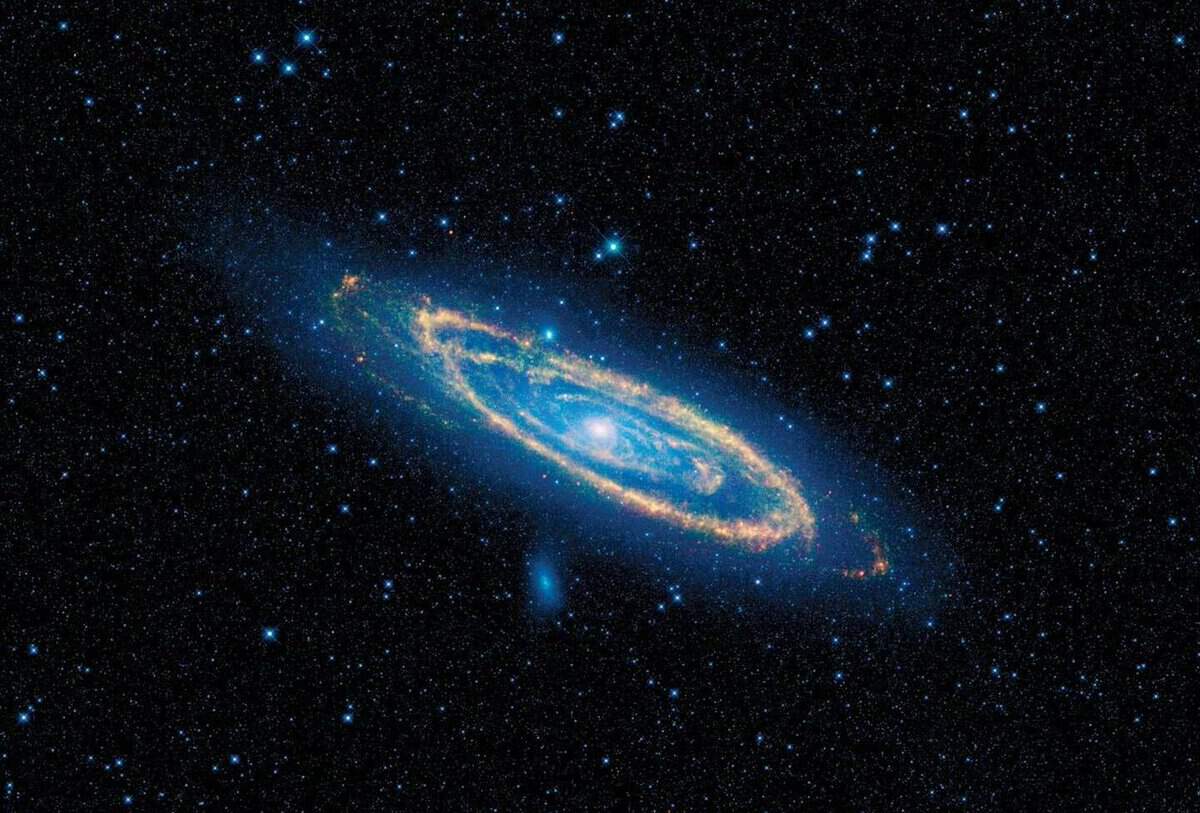
Andromeda is a celestial formation consisting of a group of stellar systems, interstellar matter, and gas that are influenced by gravitational forces. It is located at a distance of 2.5 million light-years from the Earth and is the sole celestial object visible to the unaided eye that is not part of the Milky Way.
The initial record of this celestial formation can be traced back to the year 961, when the Persian astronomer al-Sufi described it as a small nebulous cloud within the Andromeda constellation. It is highly probable that it was recognized by other ancient civilizations as well.
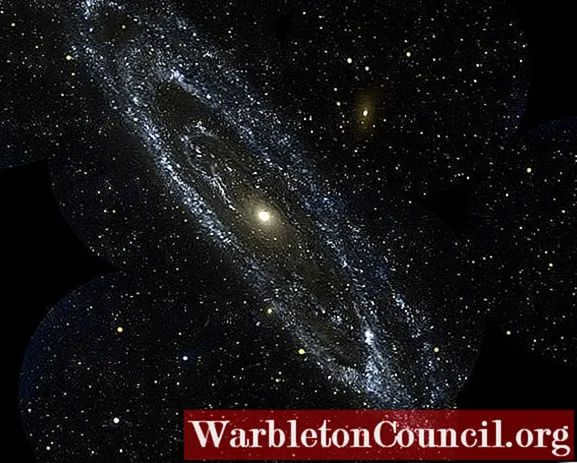
Subsequently, following Galileo, astronomers began referring to it as a “nebula” with the help of telescopes. During the 19th century, Irish astronomer William Parsons constructed a 72-inch telescope that allowed for direct observation of the intriguing spiral structure present in certain nebulae.
It was not until 1924 that astronomer Edwin Hubble made the realization that the Andromeda Spiral Nebula was distinct from the Milky Way. Hubble achieved this breakthrough by studying the characteristics of Cepheids, a type of star that exhibits regular fluctuations in brightness.
Cepheids go through cycles of expansion and contraction, altering their size and temperature, which allows for a precise correlation between their luminosity and period. This enabled Hubble to construct a scale for measuring distances in the universe and determine the separation between Andromeda and the Milky Way. This discovery provided confirmation that the nebula was indeed a separate galaxy and unveiled the vastness of the universe beyond what had previously been known.
Unique Characteristics of Andromeda
The Andromeda galaxy possesses a distinct structure that closely resembles that of our own Milky Way. Its shape can be described as a flat disk with a prominent bulge at its core, as well as multiple spiral arms extending from the center. This particular design is not found in all galaxies.
Renowned astronomer Hubble extensively studied galaxies and categorized them into three main types: elliptical (E), lenticular (L), and spiral (S), which are still utilized in modern astronomy. His seminal work also introduced the concept of the vulture pattern or the Hubble sequence, which remains influential to this day.
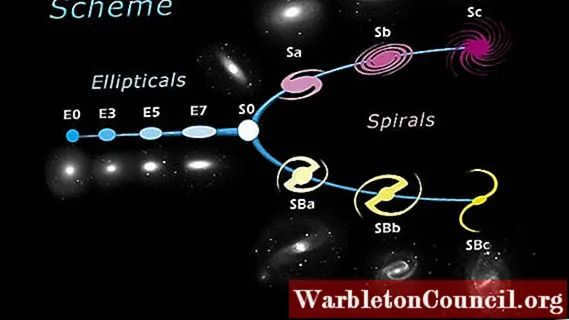
There are two categories of spiral galaxies: those with a central junction and those without.
According to the current consensus, our Milky Way is classified as an Sbb spiral galaxy with a central junction, although it cannot be observed from the outside. On the other hand, Andromeda is a simple Sb or no-jumper spiral galaxy, which is visible from our vantage point near the edge.
Here are some important characteristics of Andromeda:
– It possesses a dual core (refer to Sect. Composition for more details)
– It is roughly the same size as the Milky Way, with Andromeda being slightly larger in diameter. However, the Milky Way is more massive and contains more dark matter.
– Andromeda has several satellite galaxies that it gravitationally interacts with, including the elliptical dwarf galaxies M32 and M110, as well as the small spiral galaxy M33.
– Its diameter spans 220,000 light-years.
-The brightness of Andromeda is approximately double that of the Milky Way, boasting a staggering 1 billion stars.
– In terms of energy emission, Andromeda falls behind the Milky Way, with only about 3% of its energy being in the infrared region, as opposed to the Milky Way’s impressive 50%. This disparity is often linked to the rate of star formation, which is higher in the Milky Way and lower in Andromeda.
How to observe the Andromeda galaxy?
The Andromeda galaxy is listed as object M31 in Messier’s catalog, a collection of 110 astronomical objects dating back to 1774. It is visible in the constellation Andromeda.
In the NGC catalog (New General Catalog of Nebulae and Clusters of Stars), the Andromeda galaxy is referred to as NGC 224.
It is important to keep these designations in mind when using star maps or astronomy applications on computers and phones to locate the galaxy.
To observe the Andromeda galaxy, it is helpful to first locate the constellation Cassiopeia, which has a distinct W or M shape depending on your perspective.
Cassiopeia is easily recognizable in the night sky, and the Andromeda galaxy is situated between Cassiopeia and the constellation Andromeda proper, as depicted in the diagram below:
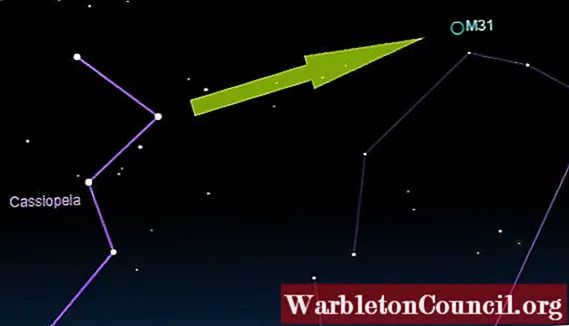
Take into account that in order to observe the galaxy with the naked eye, the sky should be extremely dark without any artificial light nearby.
Nevertheless, it is feasible to see a galaxy even from a populated city on a clear night, but always with the help of binoculars at the very least. In this instance, a small whitish oval will be noticeable at the specified location.
Using a telescope, it is possible to discern much more intricate details of the galaxy, as well as locate its two smaller companion galaxies.
The most suitable time of the year to observe it:
– Northern Hemisphere: Although it is less visible throughout the year, the optimal months are August and September.
– Southern Hemisphere: October through December.
It is recommended to observe the sky during a new moon when it is very dark, and to dress appropriately for the season.
The Local Group of galaxies
Both the Milky Way and the Andromeda galaxy are part of the Local Group of galaxies, which includes a total of 40 galaxies. The largest members of this group are the Milky Way, Andromeda, and the Triangle galaxy.
The remaining galaxies in the group are dwarf galaxies of elliptical, spiral, or irregular types, such as the Magellanic Clouds.
Structure
The composition of Andromeda is fundamentally similar to that of other spiral galaxies:
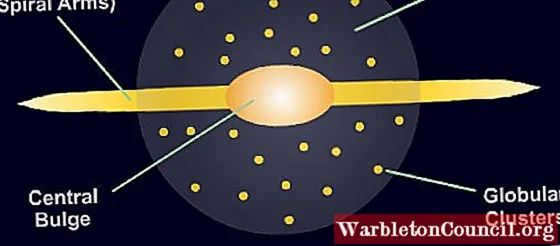
-In the center lies a supermassive black hole.
-Surrounding the core is a luminous bulb filled with stars that have evolved.
-There is also a ring of interstellar material.
-Enveloping all of these structures is a massive, diffuse sphere known as the halo, often mistaken for the halo of the nearby Milky Way.
The Origin and Evolution of Andromeda
Andromeda’s origins can be traced back to the protogalaxies, which were primordial gas clouds that formed shortly after the Big Bang, the monumental event that marked the beginning of the universe.
During the Big Bang, lighter elements like hydrogen and helium were created. As a result, the initial protogalaxies consisted primarily of these elements.
Initially, the matter was evenly distributed, but certain areas experienced slightly higher accumulation. These regions with higher density were influenced by gravity, leading to further accumulation of matter. Over time, this gravitational compression gave rise to protogalaxies.
Andromeda could potentially be the outcome of a merger between multiple protogalaxies that took place approximately 10 billion years ago.
Considering that the age of the Universe is 13.7 billion years, Andromeda was formed shortly after the occurrence of the Big Bang, just like the Milky Way.
Throughout its existence, Andromeda has assimilated other protogalaxies and galaxies, which have contributed to its current shape. Furthermore, the rate of star formation has undergone fluctuations during this period, with an increase in star formation occurring during these close encounters.
Despite the fact that the universe is known to be expanding, the Andromeda galaxy is currently moving rapidly towards the Milky Way at a velocity of 300 km/s. Therefore, a “collision” or at least a close approach between the two galaxies is anticipated in the distant future, resulting in significant deformation for both galaxies.
Events of this nature are not uncommon and do not necessarily entail violence or destruction, given the vast distances between the stars.
If the galaxies that collide are of equal size, they are likely to lose their original shape and form into an elliptical or irregular galaxy. However, if one of the galaxies is smaller, the larger one will likely retain its shape by absorbing the smaller galaxy, or it may experience some noticeable deformation.
The Role of Cepheids in Determining Astronomical Distances
Edwin Hubble utilized Cepheids to calculate the distance to Andromeda and demonstrate that it is a separate galaxy from the Milky Way.
Cepheids are incredibly luminous stars, much brighter than our Sun, which allows them to be observed from great distances. An example of a Cepheid is Polaris, also known as the North Star.
These stars are characterized by their periodic expansions and contractions, causing their brightness to fluctuate at regular intervals. This is why they are referred to as “pulsating stars.”
This is applicable to all Cepheids, regardless of their distance. As a result, when observing a Cepheid in a remote galaxy, analyzing its period will also provide information about its magnitude, as the curves representing the relation between value and period have been pre-calibrated.
Every light source possesses both an intrinsic magnitude and an apparent magnitude.
When two equally bright light sources are observed from a distance during nighttime, they may have the same intrinsic brightness, but one of the sources may appear dimmer and closer, thus appearing identical.
The intrinsic magnitude of a star is connected to its luminosity: obviously, the higher the magnitude, the greater the luminosity. Furthermore, the difference between the apparent magnitude and the intrinsic magnitude is linked to the distance to the source.
The correlation between magnitude and distance
Astronomers utilize the subsequent equation to establish a connection between the three variables mentioned: intrinsic magnitude, apparent magnitude, and distance:
Where Mv represents the apparent stellar magnitude, Mv refers to the absolute stellar magnitude, and d indicates the distance to the light source (in parsecs *), specifically a star in this scenario.
Therefore, Hubble observed the Cepheids in the Andromeda Nebula with an exceedingly low stellar magnitude, indicating their substantial distance.
Hubble employed this approach to determine the distance between us and Andromeda, which amounted to 285 kiloparsecs, equivalent to just over 929,000 thousand light years. However, the presently accepted value stands at 2.5 million light-years, over twice the estimate made by Hubble.
It was later discovered that there were actually two types of Cepheids, which was not known at the time Hubble made his calculation. As a result, his estimation of the distance was underestimated. However, even with this underestimation, Hubble was still able to demonstrate that the distance was incredibly vast, confirming that Andromeda was not a part of the Milky Way.
* 1 parsec is equivalent to 3.26 light-years.
References
- Taylor, N. The Andromeda Galaxy (M31): location, characteristics, and images. Retrieved from: space.com.
- University of Manitoba. Research project 1: Spiral galaxies. Retrieved from: Physics.umanitoba.ca.
- Pasachoff, J. 2007. Cosmos: Astronomy in the New Millennium. Third edition. Thomson-Brooks / Cole.
- Sides, M. 2011. Foundations of astronomy. Seventh edition. Cengage Learning.
- Wikipedia. Andromeda Galaxy. Retrieved from: es.wikipedia.org.
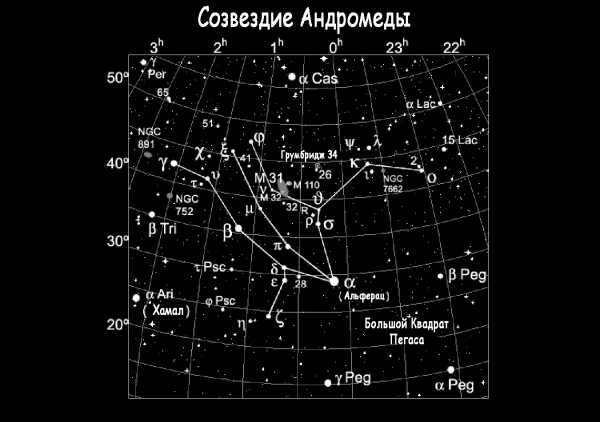
The constellation of Andromeda is visible in the northern hemisphere of Earth. It is comprised of three stars that have a magnitude of second stellar. Andromeda has a unique pattern formed by these stars, which extends from the northeast to the southwest.
In quest of the heavens
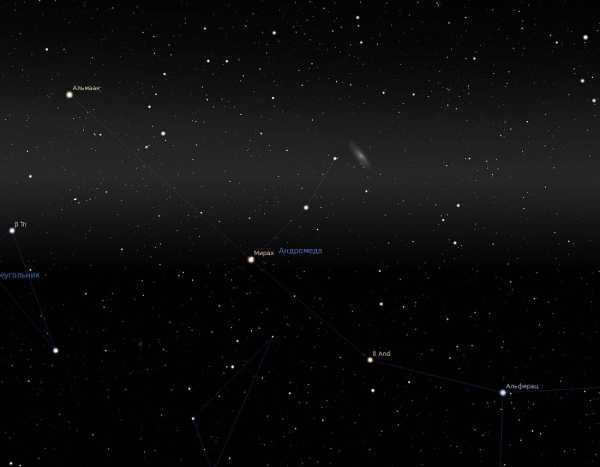
The constellation Andromeda is easily visible throughout Russia. It can be observed for most of the night as it is positioned high in the sky. The best time to observe it is in October and November, although it can be seen starting from September.
Locating the constellation Andromeda is not a difficult task. The first step is to find the Great Square of Pegasus. In the northeast corner of the square, there is a star named Alferats. This star serves as the starting point for Andromeda. The constellation covers an area of approximately 722 square degrees in the celestial sphere.
Discovering the location of M31
Engaging items
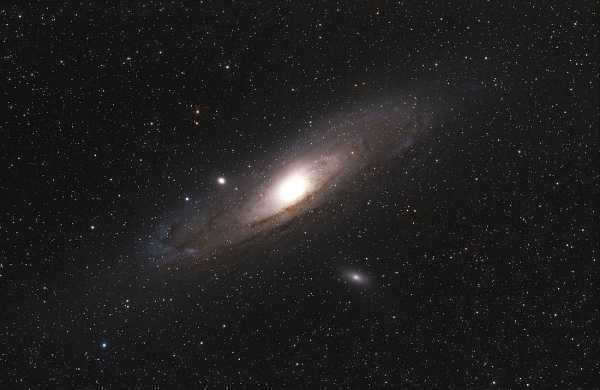
During a moonless night with clear skies, it is possible to observe approximately 160 stars with the naked eye within the constellation. These stars have a brightness of up to 6.5 magnitudes.
An overview of the Andromeda Nebula galaxy, also known as M31.
Out of all the celestial objects within the constellation, the most notable one is the spiral galaxy Andromeda Nebula or M31.
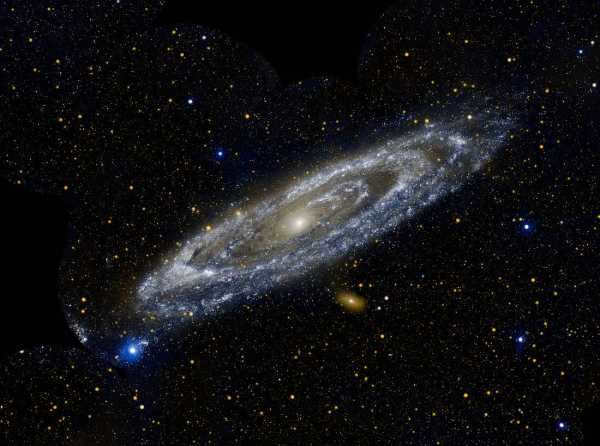
The Andromeda Galaxy, also known as M31, can be observed in the ultraviolet range.
Astronomers first observed the Galaxy M31 in the 10th century, but its true nature was not fully understood until the 19th century when powerful telescopes became available. Andromeda is home to a variety of interesting objects, including variable stars, star clusters, planetary nebulae, and dwarf galaxies.
Here is what M31 looks like through a telescope.
Astros
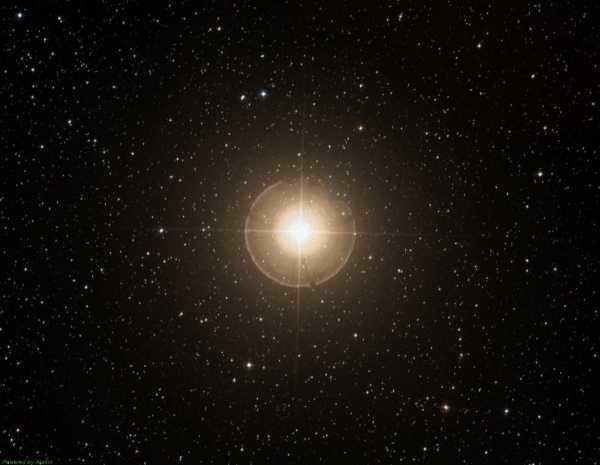
Andromeda Gamma, also known as Almack, is a celestial system comprised of three entities. The primary component is a vibrant yellow star, boasting a luminosity of second magnitude. Orbiting this star are two blue stars, physically linked to it.

Alferac is an astronomical object that possesses a brightness of 2.1 star magnitude. It is classified as a navigational star, similar to Almak. In ancient times, sailors would use stars like Alferac to navigate and find their way back home.
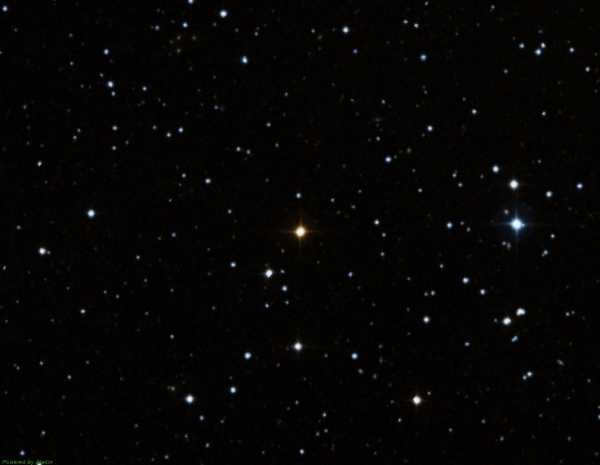
R Andromeda is a star that exhibits variability, with a fluctuation in brightness of nine magnitudes.
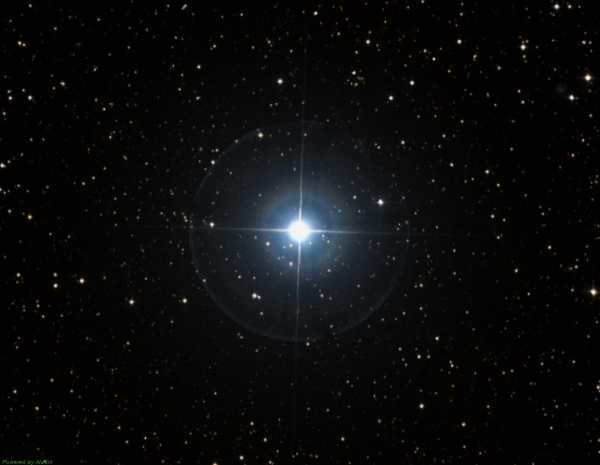
The planetary system of υ Andromeda, a main-sequence star, has been discovered by astronomers. One of the planets, planet b, is similar to Jupiter, while the other two are classified as eccentric giants.
Galaxies
The Andromeda Nebula is widely recognized as one of the most prominent galaxies. It was first observed by a Persian astronomer during the 10th century. Additionally, the Andromeda Nebula has two smaller satellite galaxies known as M32 and NGC 205.
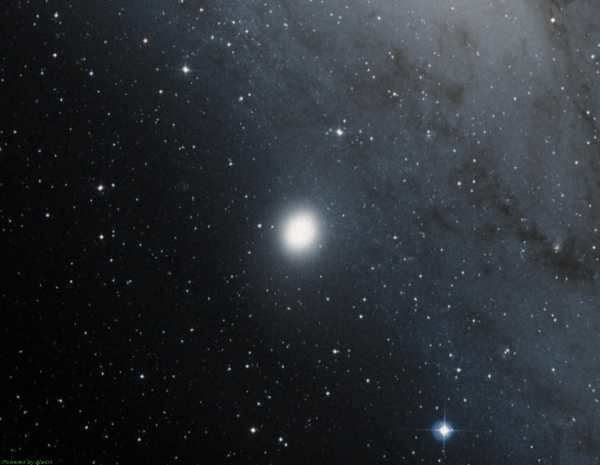
The Andromeda galaxy has a companion known as the dwarf elliptical galaxy M32.
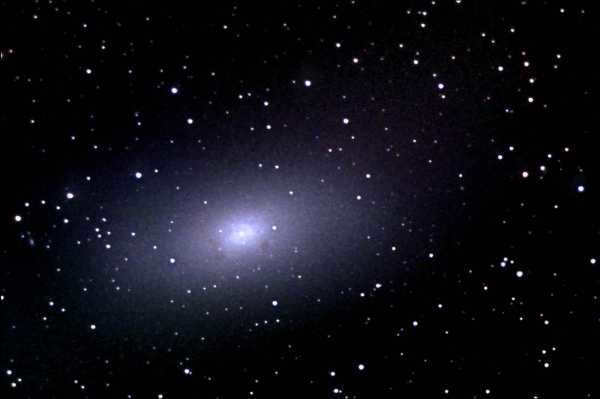
NGC224, a companion of the Andromeda Galaxy.
The nebula can be easily observed with the naked eye on a night without the presence of the moon. It has a diameter of approximately 220,000 light-years and is home to over 300 billion stars. This closest spiral galaxy is located 2.2 million light-years away. Within the nebula itself, there are numerous globular clusters. The systematic study of galaxies began with the observation of M32, and the renowned Hubble telescope played a significant role in these observations.
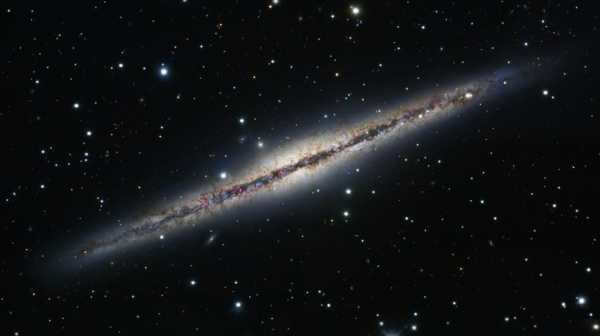
NGC 891 is an incredibly stunning galaxy that captivates the observer. Situated in close proximity to us, it displays a distinct ribbed structure that adds to its allure and visual appeal.
Awe-inspiring view of NGC 891 through the lens of a telescope
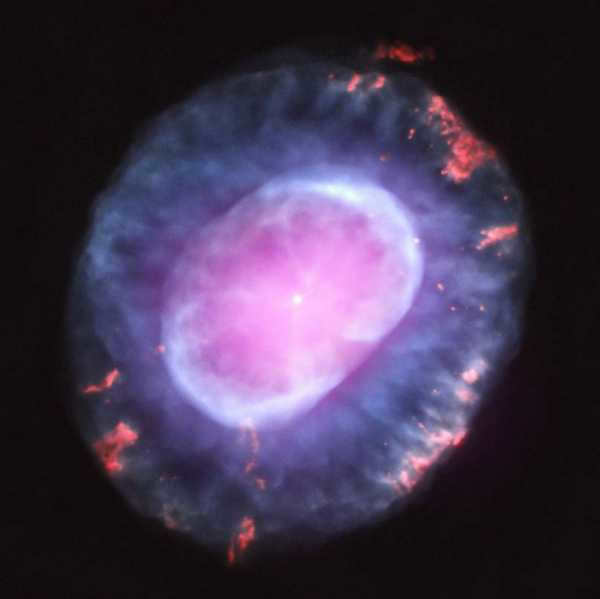
The astronomical field not only contains galaxies but also features a planetary nebula known as NGC 7662 and a star accompanied by an exoplanet known as WASP-1.
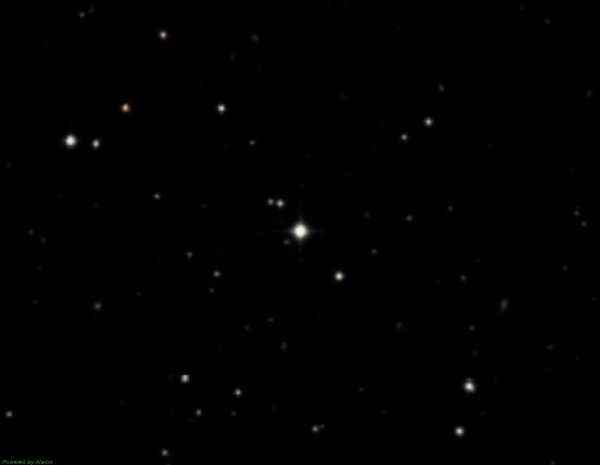

The star WASP-1 possesses an exoplanet.
The collision between the Milky Way and M31.
Currently, the two largest galaxies in the local cluster are ours and M31. We are approaching each other, and in a few billion years, our galaxies will combine to form one massive galaxy. It will be a magnificent spectacle of cosmic proportions. Astronomers have even simulated the appearance of this merger.
The Story of the Past
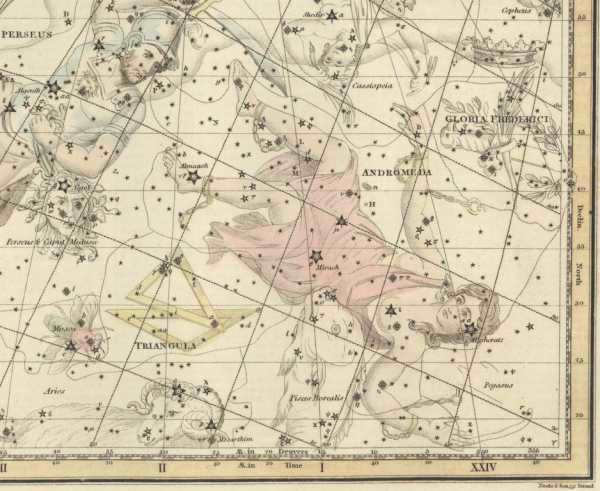
Andromeda, an ancient sky constellation, is depicted in a historical sky atlas.
It is the oldest constellation mentioned in the Almagest. According to Greek mythology, the constellation is associated with the beautiful princess Andromeda, who was offered as a sacrifice to a sea monster by her father, King Cepheus. However, she was rescued by Perseus. After her death, the gods immortalized her by placing her in the starry sky.
The Andromeda galaxy, which is the closest neighboring galaxy to the Milky Way, is significantly larger in size. It is estimated to have 2.5-5 times more stars than our Milky Way. The Andromeda galaxy is easily visible from Earth, and it is situated within the constellation Andromeda, from which it derives its name.
The Andromeda Galaxy has been a subject of scientific fascination for many years. It was first documented in the “Catalog of Fixed Stars” by the Persian astronomer As-Sufi (946), who referred to it as a “compact nebula”. Its appeal lies not only in its proximity to our own galaxy, but also in its unique characteristics, which we will explore today.
Commonly referred to as Messier 31, or M31

The name Andromeda in astronomy refers to M31, a celestial object that was included in the renowned catalog by Charles Messier. Messier, a French astronomer, documented numerous objects in the Northern Hemisphere, although not all of them were personally discovered by him.
It was named after the Andromeda constellation
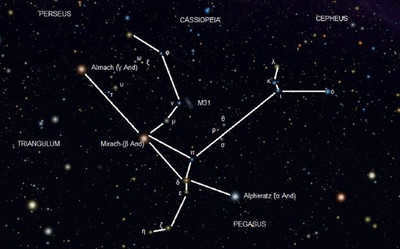
Between the Big Square asterism and the star α Cassiopeia, you can observe the constellation Andromeda in the night sky (when the constellation Cassiopeia takes the shape of the letter W, it can be found as the second lower corner). According to Greek mythology, after her death, Princess Andromeda, who was the wife of the Greek hero Perseus, was transformed into a constellation. The constellation Andromeda was first included in Claudius Ptolemy’s Almagest catalog of the celestial sky. Other stars in the constellation, such as Perseus, Cassiopeia, Cetus, and Cepheus, were also named after characters from this myth.
The Andromeda constellation is also host to many other entities. Situated beyond the galactic plane, it lacks any clusters or nebulae belonging to the Milky Way. Nevertheless, it does house other galaxies that are visible to the naked eye. Among them is the Andromeda galaxy.
It surpasses the size of the Milky Way
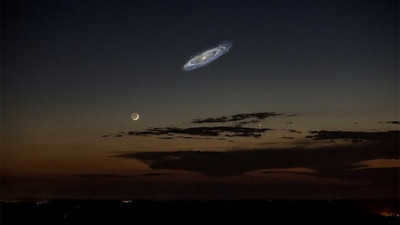
In the field of astronomy, the concept of a light-year is commonly employed to measure the distance to specific objects. However, certain astronomers opt to utilize the term parsec instead. In regard to extremely vast distances, the term kiloparsec, which is equivalent to 1,000 parsecs, is employed, as well as megaparsec, which is equal to 1 million parsecs. The expansive span of the Milky Way measures approximately 100,000 light-years, or 30 kiloparsecs. At first glance, this may appear to be an immense distance, but in actuality, our galaxy appears rather diminutive when compared to the backdrop of other galaxies.
The number of stars it holds is one trillion
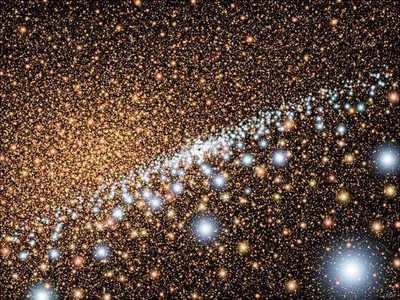
According to approximate calculations, the Milky Way might contain anywhere from 100 to 400 billion stars. However, in comparison, Andromeda is estimated to harbor approximately one trillion stars. Thanks to the Hubble Space Telescope, scientists have discovered an exceptionally large and rare population of hot and luminous stars within that vast number.
Typically, young and hot stars appear blue in color. Nevertheless, the blue stars found in the Andromeda Galaxy exhibit characteristics more akin to matured, Sun-like stars that have exhausted their inner layers, exposing their scorching blue cores. These stars are scattered throughout the central region of the galaxy and emit the strongest ultraviolet radiation.
The double nucleus is present in it
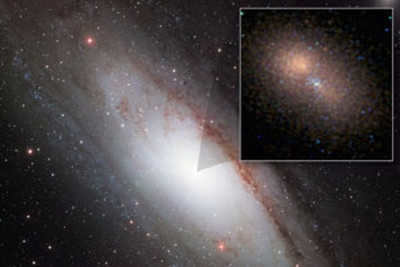
An interesting fact about the Andromeda galaxy is that it has a dual nucleus. Scientific observations have revealed the presence of two bright objects, referred to as P1 and P2, located in the central region of the galaxy. These objects are separated by a mere distance of 5 light-years. Each nucleus contains millions of young blue stars that are densely packed.
Subsequent research conducted by astronomers has led to the discovery that these two nuclei are not separate star clusters, but rather a single cluster shaped like a bagel and a supermassive black hole. The mass of this black hole exceeds 140 million times that of our Sun. The stars in the P1 nucleus orbit very closely around the black hole, similar to how planets orbit the Sun, resulting in the appearance of a dual nucleus.
Prepare for an impending cosmic catastrophe. Currently, the Andromeda galaxy is hurtling towards the Milky Way at a staggering velocity of 400,000 kilometers per hour. To put it in perspective, this is fast enough to encircle the Earth in a mere six minutes. Experts in the field of astronomy forecast that in approximately 3.75 billion years, the Milky Way and Andromeda will experience a cataclysmic collision. The question then arises: what fate awaits our planet after this monumental event?
According to experts, despite the magnitude of this event, it is believed that the Earth will survive, along with the rest of the solar system. Scientists speculate that our planet will likely not experience significant damage from this cosmic collision, as both galaxies have ample empty space. However, observing this intergalactic merger will undoubtedly be captivating from Earth (assuming, of course, that life still exists on our planet at that time). The two galaxies will be drawn towards each other until their respective black holes eventually merge into one. Once this occurs, our solar system will become part of an entirely new galaxy – an elliptical galaxy. Unless the Earth is consumed by the Sun in approximately 5 billion years, every night on our planet will be illuminated by numerous new stars. Instead of the familiar streak of Milky Way light, we will witness a more spherical source of illumination.
The absolute magnitude of this entity is 3.4.
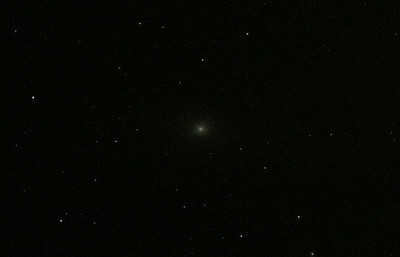
Astronomy utilizes the concept of absolute magnitude to measure the luminosity of celestial objects. This measurement allows astronomers to determine the brightness of an object, irrespective of its distance from Earth.
The Andromeda Galaxy possesses an absolute magnitude of 3.4, positioning it as the most radiant entity within the Messier catalog. Under a moonless sky, this galaxy can even be observed with the naked eye. Nevertheless, it is important to note that only the central region of the galaxy is visible to the unaided eye, appearing as a faint star. When viewed through binoculars, it takes on the appearance of a small elliptical cloud. With the aid of a powerful telescope, its size can appear up to six times larger than the Moon.
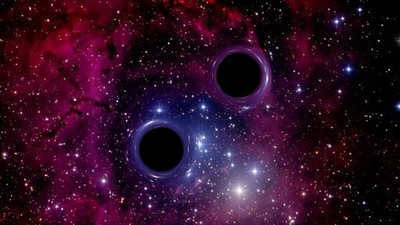
The Andromeda galaxy used to have 9 black holes in its known inventory, however, in 2013, the tally surged to 35. A group of scientists have detected 26 additional potential black holes, resulting in the galaxy becoming one of the most densely populated with these cosmic entities. The majority of these newfound black holes possess masses ranging from 5 to 10 times that of our Sun. Out of the total count, seven black holes are positioned approximately 1,000 light-years distant from the galactic core.
Astronomers have a strong belief that in the upcoming times, they will have the capability to observe a greater number of such entities within this galaxy. To illustrate, in the year 2017, two additional novel black holes were detected. Furthermore, it was also observed that both of these objects reside in the most perilous proximity ever recorded. Their separation is merely 0.01 light-years, which is approximately equivalent to a few hundred times the distance from the Earth to the Sun. Professionals approximate that these black holes may collide with one another in less than 350 years, thereby merging into a singular supermassive black hole.
Includes 450 globular clusters
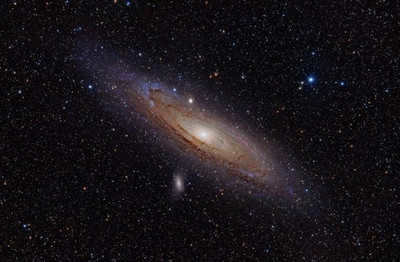
Globular clusters are compact groups of ancient stars that are gravitationally bound together. They can contain hundreds of thousands or even millions of stars. Globular clusters play a crucial role in determining the age of the universe and often help locate the central region of a galaxy. Scientists have identified at least 200 globular clusters in our own Milky Way galaxy and approximately 450 in the Andromeda galaxy.
The number of globular clusters in Andromeda may be significantly higher, but our understanding of the outer regions of this galaxy is limited. If the globular clusters in the Andromeda galaxy had a similar size to those in the Milky Way, their actual count could range from 700 to 2800.
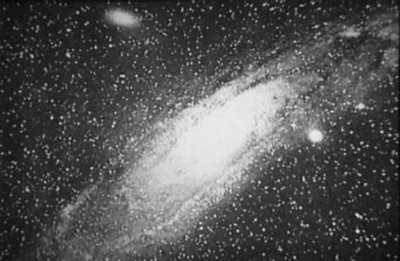
Nebulae are vast collections of gas, dust, hydrogen, helium, and plasma that serve as the birthplaces of fresh stars. These immense clusters have frequently been misidentified as faraway galaxies. However, in 1924, astronomer Edwin Hubble revealed that the spiral Andromeda Nebula is indeed a separate galaxy, proving that the universe contains more than just the Milky Way.
Hubble made a groundbreaking discovery when he observed a multitude of stars within the Andromeda galaxy, including numerous Cepheids. These particular stars are classified as pulsating variables and have a consistently precise relationship between their period of pulsation and their luminosity. By determining the distance to these stars, Hubble was able to calculate the vast distance between the Andromeda galaxy and our own. Astonishingly, this distance amounted to 860,000 light-years, which is over eight times the distance to the most remote stars in our Milky Way galaxy. This significant finding provided compelling evidence that Andromeda is indeed a galaxy, disproving the earlier theory that it was a nebula. Subsequently, Hubble further affirmed his previous discovery by confirming the existence of numerous other galaxies.
Gemini (Latin: Gemini) is a constellation of the zodiac in the northern part of the sky. It is known for its two brightest stars, Pollux and Castor, which have a visual stellar magnitude of 1.16 and 1.59, respectively. The Sun is in Gemini from June 20 to July 20. The best time to see Gemini is in December-January. It can be seen throughout Russia.
Volk (Latin: Lupus) is a constellation in the southern part of the sky, situated between Centaurus and Scorpius. In Russia, it can be partially observed in the central and southern regions, but its full visibility is only below 35° north latitude. The brightest star in the constellation, α Wolf, has a magnitude of 2.3m. Within Russia, this star is only visible in southern Dagestan. The best time to see Volk is in May.
Volopassus (Latin Boötes from Greek Βοώτης, “plowman (on oxen)”; Boo) is a constellation found in the northern hemisphere of the sky. The most optimal time for observing this constellation is during the spring and the first half of summer. It can be seen throughout Russia.
Aquarius (Latin: Aquarius) is a large zodiacal constellation that is situated between Capricorn and Pisces. One notable feature in Aquarius is the “Jug”, a small Y-shaped group of five stars that appears to be riding along the celestial equator. The central star in this formation, ζ Aquarius, is actually a binary star. Other interesting objects in Aquarius include the globular cluster M 2 and the planetary nebulae Saturn and Snail (NGC 7009 and NGC 7293). Additionally, Aquarius is the location of the radiant point for the Delta Aquarids meteor shower, which is active in late July.
A light year, also known as a sv. year in Russian and ly internationally, is a form of measuring distance in astronomy. It represents the distance that light travels in a vacuum over the course of one Julian year, without being affected by gravitational fields. While not part of the SI system of measurement, it is commonly used in the field of astronomy.
Mentions in literature
1- If you look towards the fall sky, guided by Cassiopeia, you will have no trouble locating the Square of Pegasus, which forms the continuation of the chain of stars of Andromeda. In close proximity to Andromeda, there is something quite remarkable to observe: the Andromeda Nebula, positioned just above the star Mirach. Astronomers refer to this luminous patch as M31. It can only be observed under optimal conditions. This luminous patch represents a separate galaxy, known as the Andromeda Galaxy.
Astronomers have made an astounding revelation through the use of telescopes – the existence of numerous galaxies apart from our very own. Currently, we are familiar with three primary classifications of galaxies. The first category comprises of spiral galaxies, which bear a resemblance to our very own Milky Way. Among these, the closest one is located roughly two million light years away from our position. Remarkably, it takes the form of an immense spiral galaxy situated within the constellation Andromeda.
Continuation of Related Concepts
The yearly parallax of a star refers to a shift in the star’s coordinates caused by a change in the observer’s position resulting from the Earth’s orbit around the Sun. This phenomenon serves as evidence of the Earth’s movement around the Sun and is the primary method for measuring distances to stars. The annual parallax of a specific star corresponds to the angle at which the Earth’s orbit’s major semi-axis is visible from the star’s distance. Due to the vast distances to stars, even the closest ones have annual parallaxes that are less than one second of arc.
The Ursa Major (also known as the Big Dipper) is a constellation that can be found in the northern hemisphere of the sky. The seven stars that make up the Ursa Major form a shape that resembles a bucket with a handle. The two brightest stars in this constellation, Aliot and Dubhe, have an apparent sidereal magnitude of 1.8. By locating the two outermost stars (α and β) of this shape, one can easily find the North Star, also known as Polaris.
The Canis Major (or the Big Dog) is a constellation that can be found in the southern hemisphere of the sky. The brightest star in this constellation is Sirius, which has a luminosity of -1.46m. The best time to observe this constellation is during the months of December and January. It is located to the southeast of the Orion constellation, specifically “under the right foot” of Orion. Part of the Canis Major also lies within the Milky Way. In Russia, this constellation can be observed in its entirety in the southern and central regions, and partially in the northern regions.
Libra is a constellation of the zodiac that is situated between Scorpio and Virgo. It is home to a total of 83 stars that can be seen without the aid of a telescope. Despite only having six stars that are brighter than 4th magnitude, the constellation Libra is still highly visible in the night sky. The Sun is within the boundaries of Libra from October 31 to November 22. The best time to observe Libra is during the months of April and May. It can be fully seen from central and southern Russia.
A multiple star is a system that includes three or more stars that appear to be close together when viewed from Earth. This closeness can be either an optical illusion (when stars at different distances appear close in our line of sight), or it can be a result of the stars being physically close and held together by gravity. When stars are physically close and bound together, they form a physically multiple star system. Optically multiple stars and physically multiple stars are both examples of multiple star systems.
A binary star, also known as a double star, refers to a system consisting of two stars that are gravitationally bound and orbit around a common center of mass. These double star systems are quite prevalent in the universe, with approximately half of all stars in our Milky Way galaxy belonging to such systems.
Coma Berenices, also known by its Latin name Veronica Volosae, is a constellation located in the northern hemisphere of the celestial sphere. Covering an area of 386.5 square degrees in the sky, this constellation contains a total of 64 stars that can be seen with the naked eye, with 50 of them being brighter than 6m. One notable feature of this constellation is that it houses the north pole of the Galaxy, providing a vantage point from which thousands of galaxies and numerous galaxy clusters can be observed.
A star is a massive celestial body consisting of gas that emits light and is held together by the forces of gravity and internal pressure. Within a star, thermonuclear fusion reactions occur or have occurred in the past. The Sun, which belongs to the spectral class G, is the closest star to Earth.
In our Galaxy, known as the Milky Way, the Sun (☉) is one of the stars and the only star in our Solar System. The Sun is orbited by various objects, including planets and their moons, dwarf planets and their moons, asteroids, meteoroids, comets, and space dust.
The constellation known as the Swan can be found in the northern hemisphere of the sky. It features a distinct cross-shaped pattern made up of bright stars, forming what is known as the Northern Cross asterism. This pattern stretches along the Milky Way. Throughout history, people have associated this constellation with a flying bird. The Babylonians referred to it as the “forest bird,” while the Arabs saw it as a chicken.
Stellar magnitude (m) is a measurement of the brightness of a celestial body, as seen from Earth. Specifically, it refers to the level of illumination created by that body. This measurement is typically adjusted to account for atmospheric conditions. The higher the stellar magnitude, the brighter the object appears.
Lyra, also known as Lyr or લેયરા in Gujarati, is a small constellation located in the northern hemisphere. It can be found between the constellations Hercules and Swan.
The constellation of Cancer is not easily detectable and can only be observed on a clear night between the constellations of Leo and Gemini. With an apparent stellar magnitude of 3.53m, the brightest star in Cancer is β Cancer.
Dwarf novae, also known as U Gemini type stars or UG stars, are a specific type of cataclysmic variable star. These stars are part of a close double star system where one of the components is a white dwarf that accretes matter from its companion. Although similar to classical novae in terms of periodic outbursts involving the white dwarf, the mechanisms behind these outbursts differ. In classical novae, the outburst occurs due to a thermonuclear reaction and detonation of the accreted hydrogen, while in dwarf novae, the outburst is caused by a different thermonuclear reaction that also leads to the detonation of the accreted hydrogen.
Pegasus, also known as Latin: Pegasus, is a constellation located in the starry sky of the northern hemisphere. It can be found in the southwest of Andromeda. This constellation covers an area of 1120.8 square degrees in the sky and contains a total of 166 stars that are visible to the naked eye.
An orange dwarf is a type of star that falls under the main-sequence category with a spectral class of K and luminosity class of V. These stars are situated between M-class main-sequence red dwarfs and G-class yellow dwarfs. Orange dwarfs have a mass ranging from 0.5 to 0.8 times that of our Sun, with an effective temperature of 3900-5200 K.
Constellations are divisions of the celestial sphere that are used for easy navigation in the night sky. In ancient times, these divisions were represented by unique figures created by groups of bright stars.
Hercules, also known as Hercules in Latin, is a constellation that can be found in the northern hemisphere of the sky. It covers an area of 1225.1 square degrees and contains 235 stars that are visible without the aid of a telescope. This constellation is visible throughout Russia and reaches its highest point in the zenith region in the southern part of the country. The best time to see Hercules is in June when visibility conditions are most favorable.
Scorpio, or Scorpius in Latin, is a constellation of the zodiac that is located between Sagittarius in the east and Libra in the west. It is situated entirely within the Milky Way and borders Serpens to the north and Sacristan to the south.
Cetus (Latin: Cetus, Cet) is a celestial constellation situated in the region of the sky associated with “water,” close to the constellations Aquarius, Eridanus, and Pisces. It is fully observable in the central and southern regions of Russia, with the most favorable viewing conditions occurring in October-November.
Virgo is an equatorial zodiacal constellation positioned between Leo and Libra. In modern times, the autumnal equinox point is located within the boundaries of the Virgo constellation.
Hydra (Greek ύδρα, Latin Hydra, named after a creature from Greek mythology) is a constellation located in the southern hemisphere of the sky. The brightest star in Hydra, Alfard, has a visual magnitude of 2.0. The optimal visibility conditions for observing Hydra are during February and March. It is fully visible in the southern regions of Russia and partially visible in the rest of the country.
An extrasolar planet, also known as an exoplanet, is a celestial body that exists outside of our solar system. Detecting these planets has been a challenge due to their small size and faintness compared to stars, as well as the vast distances between stars and our Sun (with the closest star being 4.24 light-years away). It wasn’t until the late 1980s that the first exoplanets were discovered.
A carbon star is a type of star that comes after the red giant stage (or sometimes a red dwarf). These stars have an atmosphere with a higher concentration of carbon than oxygen. In the upper layers of the star, carbon monoxide forms as the carbon and oxygen mix, leaving the oxygen bound and the carbon free to create other carbon compounds. This unique composition gives carbon stars a “blackish” atmosphere and a vibrant red appearance when observed from the outside.
Pisces is a large constellation in the zodiac, situated between Aquarius and Aries. It is commonly divided into “northern Pisces” (located under Andromeda) and “western Pisces” (situated between Pegasus and Aquarius).
Centaurus or Centaurus (Latin: Centaurus) is a constellation found in the southern hemisphere of the celestial sphere. It lies along the trajectory of the Big Dipper – Virgo, approximately 40-50 degrees south of the celestial equator.
A red dwarf is a relatively small and cool main-sequence star of spectral class M or late K, as per the Hertzsprung-Russell diagram.
Eridanus (Latin: Eridanus, Eri) is a constellation located in the southern hemisphere, ranking sixth in terms of area among modern constellations. It stretches southward from the celestial equator to a declination of -58 degrees. Occupying an area of 1137.9 square degrees in the night sky, it contains 187 stars visible to the naked eye.
Serpens is a constellation located near the equator. It covers an area of 636.9 square degrees in the sky and contains 106 stars that can be seen without the aid of a telescope. The best time to observe Serpens is in the month of June. This constellation is visible throughout Russia. What makes Serpens unique is that it is composed of two separate parts, which are divided by the constellation Serpentine. The “Snake’s Head” is located in the northwest, while the “Snake’s Tail” is in the east.
Dragon, also known as Draco in Latin, is a constellation that can be seen all year-round in the Northern Hemisphere of the sky. It covers an area of 1083 square degrees. Within the Dragon constellation lies the north pole of the ecliptic, which has equatorial coordinates of R.A.=18h00m and Dec=+66°33′.
Bright giants are stars that fall between the categories of giants and supergiants. While they have luminosities similar to those of supergiants, they are generally not massive enough to be classified as such. The mass of bright giants is typically limited to a few solar masses.
A δ Shield type variable star (δ Sct) is a type of star that experiences significant changes in luminosity due to radial and non-radial pulsations occurring on its surface.
Orbital period refers to the amount of time it takes for a celestial body to complete a full revolution around an external center of gravity or a shared center of mass with another celestial body.
Perseus is a constellation situated in the northern part of the celestial sphere, deriving its name from the renowned Greek hero who vanquished the fearsome Gorgon Medusa. It is among the 48 constellations cataloged by Ptolemy and has been officially recognized by the International Astronomical Union as one of the 88 contemporary constellations. Notably, it encompasses the prominent variable star Algol (β Persei), as well as serves as the radiant point for the annual Perseid meteor shower.
The Bortle scale, which consists of nine distinct levels, serves as a metric for evaluating the luminosity of the night sky at specific locations. This scale effectively quantifies the observability of celestial objects and the degree of interference caused by light pollution. John E. Bortle is the creator of this scale, and he unveiled it in the esteemed journal Sky & Telescope in February 2001. The primary aim of this scale was twofold: firstly, to assist amateur astronomers in gauging the darkness of their observing sites, and secondly, to enable comparisons between different observing sites in terms of their level of darkness. This scale is categorized into various classes.
The Eagle constellation, also known as Aquila in Latin, is located in the equatorial region of the sky. Its western portion is situated in the eastern branch of the Milky Way, just south of the Arrow constellation. Covering an area of 652.5 square degrees, this constellation boasts a total of 70 stars that shine brighter than magnitude 6.
On the other hand, the Unicorn constellation, known as Monoceros in Latin and derived from the Greek word μονόκερως, is also found in the equatorial region. It spans an area of 481.6 square degrees and contains 146 stars that can be seen without the aid of a telescope. While it lies within the Milky Way, it does not host any particularly bright stars. The Unicorn constellation can be easily located within the winter triangle formed by the prominent stars Sirius, Procyon, and Betelgeuse. It is one of the 15 constellations that the celestial equator passes through and is visible in the central and southern regions of the sky.
Kiel, also known as Carina or Car, is a constellation located in the southern hemisphere of the sky. It covers an area of 494.2 square degrees and contains 206 stars that can be seen without the aid of a telescope. In Russia, this constellation is not visible, and in the former USSR, only a small portion of it, including Canopus, can be seen in the southernmost regions. In Kushka, Canopus rises just 2 degrees above the horizon, in Termez it is barely visible at 0°04’49”, and in Ashgabat, it is no longer visible. The other prominent stars within the constellation are…
Peacock (Latin: Pavo) is a constellation located in the southern hemisphere of the celestial sphere. It derives its name from the majestic peacock bird. This constellation is fully visible in the entire Southern Hemisphere and partially visible in the tropics of the Northern Hemisphere. Unfortunately, it cannot be seen from Russia. The peacock constellation is one of the 12 constellations that were introduced by P. The depiction of the peacock first appeared on a star globe with a diameter of 14 inches, which was created in 1598 in Amsterdam by Plancius and J. Hondius.
A subgiant star is a former main-sequence star that is similar to our Sun or slightly more massive. These stars have depleted their hydrogen fuel in the core and have switched to burning hydrogen in the core envelope. However, they have not yet started burning helium.
Further References in Literature
A Metagalaxy can be defined as a collection of star systems – galaxies that move throughout the vast expanse of the observable Universe. The well-known Magellanic Clouds, which are visible in the southern hemisphere sky as two large spots with a similar surface brightness to the Milky Way, are the closest galaxies to our star system. The distance to the Magellanic Clouds is approximately 200 thousand light years, which is comparable to the total length of our galaxy. Another galaxy in proximity to us is the nebula in the Andromeda constellation. It can be seen with the naked eye as a faint 5th magnitude light spot. In reality, it is a massive stellar world that contains three times more stars and total mass than our Galaxy, making it a giant among galaxies. The distance to the Andromeda Nebula, also known as M31 in the Messier catalog, is about 1800 thousand light years, which is roughly 20 times the size of our Galaxy. The M31 nebula exhibits a prominent spiral structure and shares many characteristics with our own Galaxy. It has small ellipsoidal satellites nearby (photo 5-II). Photos 6-II-III showcase several galaxies that are relatively close to us, displaying a remarkable variety of shapes. In addition to spiral systems (designated by symbols Sa, Sb, and Sc depending on the development of the spiral structure; if there is a “jumper” passing through the nucleus (photo 6a-II), the letter B is added after the letter S), there are spheroidal and ellipsoidal galaxies without any traces of spiral structure, as well as “irregular” galaxies, with the Magellanic Clouds serving as a prime example.
The telescope revealed to us the breathtaking beauty and enigma of the starry sky. The operator of this incredible device patiently answered my inquiries. It was astonishing to discover that the faint, tiny dot we could barely perceive was the Andromeda constellation, a neighboring galaxy twice the size of our own. The distance from Earth to Andromeda spans over two million light years (a light year being the distance light travels in one year, equivalent to ten trillion kilometers). I attempted to fathom the speed of light, which is three hundred thousand kilometers per second, imagining myself traversing the cosmic void for two and a half million years. I couldn’t help but chuckle when the astronomer informed me that Andromeda is the closest galaxy among the hundred billion galaxies known to science. Each of these galaxies hosts billions, if not hundreds of billions, of stars, around which solar systems with an unknown number of planets orbit like cozy hearths.
It would be great to capture an image of the Milky Way from an appropriate distance, but no cameras have been dispatched there yet, so we must settle for a depiction of a galaxy resembling ours, specifically, the closest spiral galaxy resembling ours – M31 in the constellation Andromeda. Once more, the stars of the Milky Way are in the foreground, with M31 and its two companion galaxies visible through them.
The Sun is a star within the Milky Way Galaxy, which is composed of billions of stars. This is where we, the “rulers of the natural world,” reside. It takes approximately 100,000 years for light to travel from one end of our galaxy to the other. The nearest galaxy to us is positioned roughly two million light years away. It is an immense spiral galaxy situated in the constellation Andromeda.
New findings from researchers at the University of Maryland reveal that Markarian 231, a galaxy three times the size of our Milky Way, is in its final stages of existence. Surprisingly, this colossal galaxy is being destroyed by its own central black hole, a phenomenon that occurred when Markarian 231 attempted to merge with a neighboring galaxy. This situation mirrors what may happen when our Milky Way and Andromeda galaxies eventually collide!
As the Andromeda galaxy draws closer to our Milky Way, it will become noticeable to us Earth inhabitants. Scientists predict that one of the first changes we will observe is a rearrangement in the structure of the night sky. For instance, the familiar Big Dipper will no longer be visible to us.
The galaxy acquired its peculiar name because astronomers in the 18th century initially mistook it for a nebula, a collection of interstellar gas, located in the constellation Andromeda. It was only later that they realized it was a genuine galaxy, but the name stuck.
In August 2007, the “Spitzer” orbital telescope detected a major cosmic event – the fusion of four galaxies into a single entity. This groundbreaking discovery led scientists to speculate that a similar fate awaits our own Milky Way. Furthermore, experts predict that our Solar System is destined to collide with the Andromeda Nebula. These two colossal galaxies are currently hurtling towards each other, resembling two massive locomotives on an unstoppable collision course.
Several unknown and highly sensitive detectors had picked up on the imminent arrival of the Dark Flame and were currently communicating with it using a universal language that is understood by the millions of planets and star clusters within the powerful alliance known as the Great Ring. Even the galaxy of M-31, also known as the Andromeda Nebula, is now joining forces with us through direct beam starships, merging its collective consciousness with ours, heralding the dawn of a new era of Extra-Universal Virtual Reality (EVR). This language, which has been decrypted by the remarkable Kam Amat, a native of Earth, is about to reverberate through the conventional symbols of the planet Tormance!
Currently, the central black holes of galaxies are secure from nearby stars due to the presence of planets with satellites at a sufficient distance. At distances of thousands of light years, black holes are unable to exert gravitational attraction on stars. However, when our Milky Way galaxy collides with the Andromeda Nebula, the black holes in both galaxies will combine to form one immensely large supermassive black hole that will draw in any matter that crosses its path.
The Andromeda Nebula, located in the Andromeda constellation, is a neighboring galaxy to our own. Similar to our Galaxy, it contains billions of stars, star clusters, gas and dust clouds, dead stars, and planets. It takes two million, three hundred thousand years for light from this galactic neighbor to reach us, highlighting the vast distances between galaxies. In comparison, light only takes 8 minutes to travel the 150 million kilometers from the Earth to the Sun.

